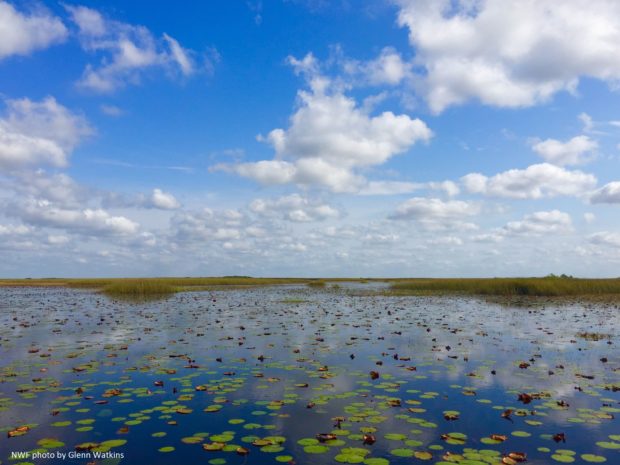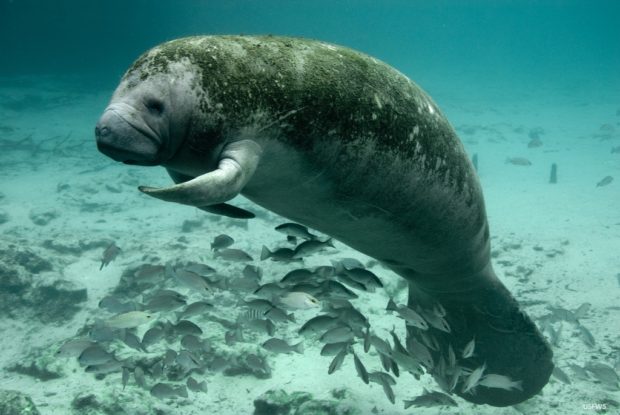We have much more to do and your continued support is needed now more than ever.
A New Hope for America’s Everglades

Water is the lifeblood of America’s Everglades. The slow, steady flow of freshwater feeds the Glades’ sawgrass marshes, cypress swamps, pinelands, and estuaries. It is essential for fish and wildlife and it provides drinking water for coastal communities. And it is why anglers return year after year to the iconic fishing paradise of Florida Bay.

A big issue that has plagued the Everglades in recent decades is an unbalance in the flow of this life-giving water. Too little freshwater is flowing through the Everglades to Florida Bay, while too much polluted water is flushed from Lake Okeechobee to coastal estuaries, causing outbreaks of toxic green algae to slime Florida’s beaches.
Florida Bay’s saltwater anglers can see the effects firsthand.
“It almost seems Florida Bay gets murkier every year. The water clarity and quality has obviously dropped, and that’s made very evident by bonefish. I’m no expert, but they aren’t there like they used to be.” – George Hillhouse
“I won’t pretend to understand the science of what’s going on or how to fix it, but clear water and seagrass flats have become a chocolate milkshake over sandflats…check that, it’s more of a tea color, to be fair. I’m sure some of the degradation is from development in the area. Also, I understand not enough water reaches the Everglades, and much of the problems are the result of that issue. Again, I don’t necessarily understand the science, but I do see the outcome.” – Mark Hiroven
Anglers also know that the problem starts upstream and the solution is to reconnect the Everglades and Florida Bay with its life-force: water.
“The biggest is building a reservoir south of Okeechobee to help restore more natural flows. I support it and think it’s the best way to restore a healthy fishery.” – Tim Kolschowsky
“It’s obvious the water coming is just getting worse. I remember reading in ’87 about an effort to purchase land and build a reservoir south of Okeechobee to return the flow to the Glades. It’s not a new idea, and it’s past time it was done. I absolutely support it.” – George Hillhouse
Thankfully, the Florida Legislature has finally heeded the call of anglers, businesses, and South Florida residents by passing SB 10, a bill to send to send more water south. This bipartisan bill funds the construction of a reservoir to store, clean, and convey water from Lake Okeechobee south to Everglades National Park and Florida Bay and reduce the amount of water flowing to coastal estuaries.

The bill, championed by Senate President Joe Negron, directs the South Florida Water Management District and the Army Corps of Engineers to develop a plan to construct a reservoir in the Everglades Agricultural Area that can provide at least 240,000 acre feet of water storage south of Lake Okeechobee. When identifying parcels of land for the reservoir, the District and the Corps are required to prioritize state-owned land within the EAA and only purchase a small amount of privately-owned land from willing sellers. The state would cover $800 million, half of the proposed $1.5 billion cost of the project.
So, celebrate, but there’s still plenty more to do!
Though the reservoir in this bill is smaller than what was initially proposed, it is big enough to make a difference for the Everglades and Florida’s coastal estuaries. Once constructed, the reservoir will reduce the amount of polluted water that destroys Florida’s estuaries and will clean and send more water south to the Everglades and Florida Bay. But, there’s a very long road to construction, and since the project is designed to split the cost between the state and the federal government, it still needs to be approved by Congress.

Sending clean water south is a critical component to getting the Everglades off life support and safeguarding Florida’s outdoor heritage, and this bill is a step in that direction.






















